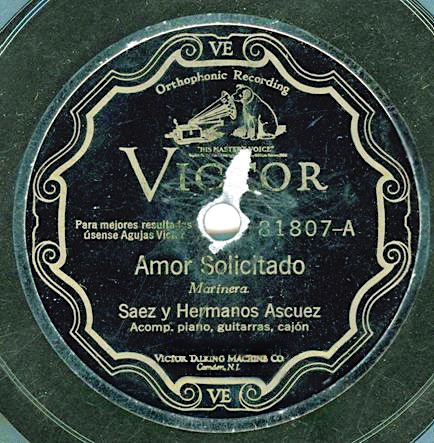The cajón is one of the most emblematic and versatile Peruvian instruments, with a rich tradition that dates back to the mid-18th century. Its origin is deeply linked to the rhythms of African descent that arrived in Peru through slaves brought during the Viceroyalty era. These people settled mainly along the Northern, Central (Lima), and Southern coasts of the country (Chincha, El Carmen, Cañete), and with them came their dances. One of these rhythms, the zapateo, became characteristic of the Afro-descendant communities in these areas. Due to colonial prohibitions against the use of drums, they sought alternatives to keep their musical expression alive. They began to use everyday objects like tables, chairs, boxes, and especially wooden crates that were no longer in use—often from the ports, mainly in El Callao, where fruits and other goods were stored. By removing one of the panels of the box to allow greater vibration, these objects were ingeniously transformed into percussion instruments. However, in its early days, the cajón was not formally recognized as a musical instrument. One of the first literary references to the cajón appears in the work of costumbrista writer Manuel Ascencio Segura, who sharply depicted 19th-century life in Lima. In his play Lances de Amancaes, written before 1862, Segura describes the traditional festivals held on the Pampa de Amancaes, mentioning both the zamacueca and the use of the cajón—evidence of the instrument’s popularity at the time.
Thanks to its rich sound, adaptability, construction techniques, and the skill developed by musicians, the cajón gained prominence and eventually became Peru’s main percussion instrument. Its rhythmic development and diffusion in coastal music have been remarkable, making it a symbol of national identity. The cajón is present in Afro-Peruvian genres such as landó, festejo, alcatraz, toromata, panalivio, and ingá, and also skillfully accompanies the Peruvian waltz, criollo polka, one step, pasodoble, tondero, and marinera.
The first recordings of the cajón were made in 1913, when the Victor Talking Machine Company (RCA) sent technicians to Lima. More recordings followed in 1928, particularly notable being those from March 27, recorded at “Barraganes 350, Lima.”

In the 1950s, modifications were experimented with in Trujillo and Chiclayo, such as adding strings inside the cajón to enhance its brightness and high-end response. However, this innovation was rejected by some traditional musicians. In the 1970s and 80s, the use of cedar for its construction became widespread, although some front panels began to be made of mahogany or veneered plywood. In 2001, the cajón was declared Cultural Heritage of the Nation by Peru’s National Institute of Culture. Later, in 2014, the Organization of American States (OAS) honored it as the “Instrument of Peru for the Americas.”
Today, the cajón is not only a symbol of Afro-Peruvian and criollo identity, but also one of the Peruvian instruments with the greatest international projection, integrated into many musical genres around the world. Its unique sound and its history of resistance and creativity make it a true cultural treasure.
